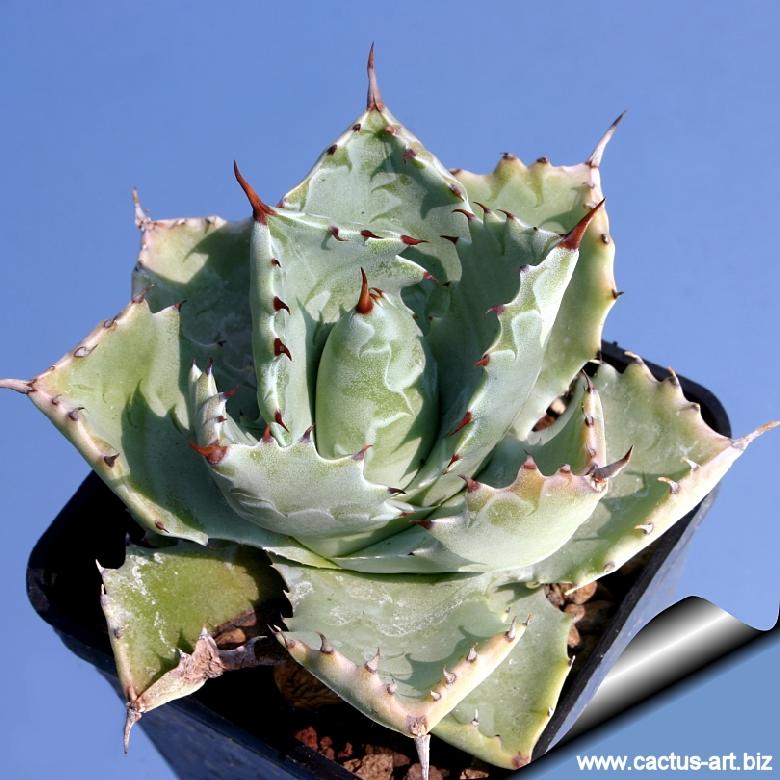Donate now to support the LLIFLE projects.
Your support is critical to our success.
Your support is critical to our success.

Agave potatorum forma compatta ('compact form)
This is the more frequently seen form in cultivation, particularly priced for its small size. The leaves have distinct showy bud-imprints.
This is the more frequently seen form in cultivation, particularly priced for its small size. The leaves have distinct showy bud-imprints.
Synonyms:
See all synonyms of Agave potatorum
back
Accepted name in llifle Database:Agave potatorum f. compacta hort.
Accepted name in llifle Database:
Agave potatorum Zucc.
Nova Acta Phys.-Med. Acad. Caes. Leop.-Carol. Nat. Cur. 16(2): 675 1833
Synonymy: 6
- Agave potatorum Zucc.
- Agave auricantha hort. ex Baker
- Agave potatorum Tlaxiaco, Oaxaca, Mexico
- Agave scolymus Karw. in Salm-Dyck
- Agave amoena Lem. ex Jacobi
Agave potatorum var. verschaffeltii A.Berger in A.Berger
Agaven 186, fig. 60 1915
Cultivars (5):
- Agave potatorum cv. Cubic
- Agave potatorum cv. Kichijokan
- Agave potatorum cv. Shoji-Raijin hort.
- Agave potatorum cv. Shoji-Raijin variegata marginata hort.
- Agave potatorum cv. Shoji-Raijin variegata mediopicta hort.
back
| Your Actions | |
|---|---|
| Back to Agave index | |
| Back to Agavaceae index | |
 |
Back to Succulents Encyclopedia index |








